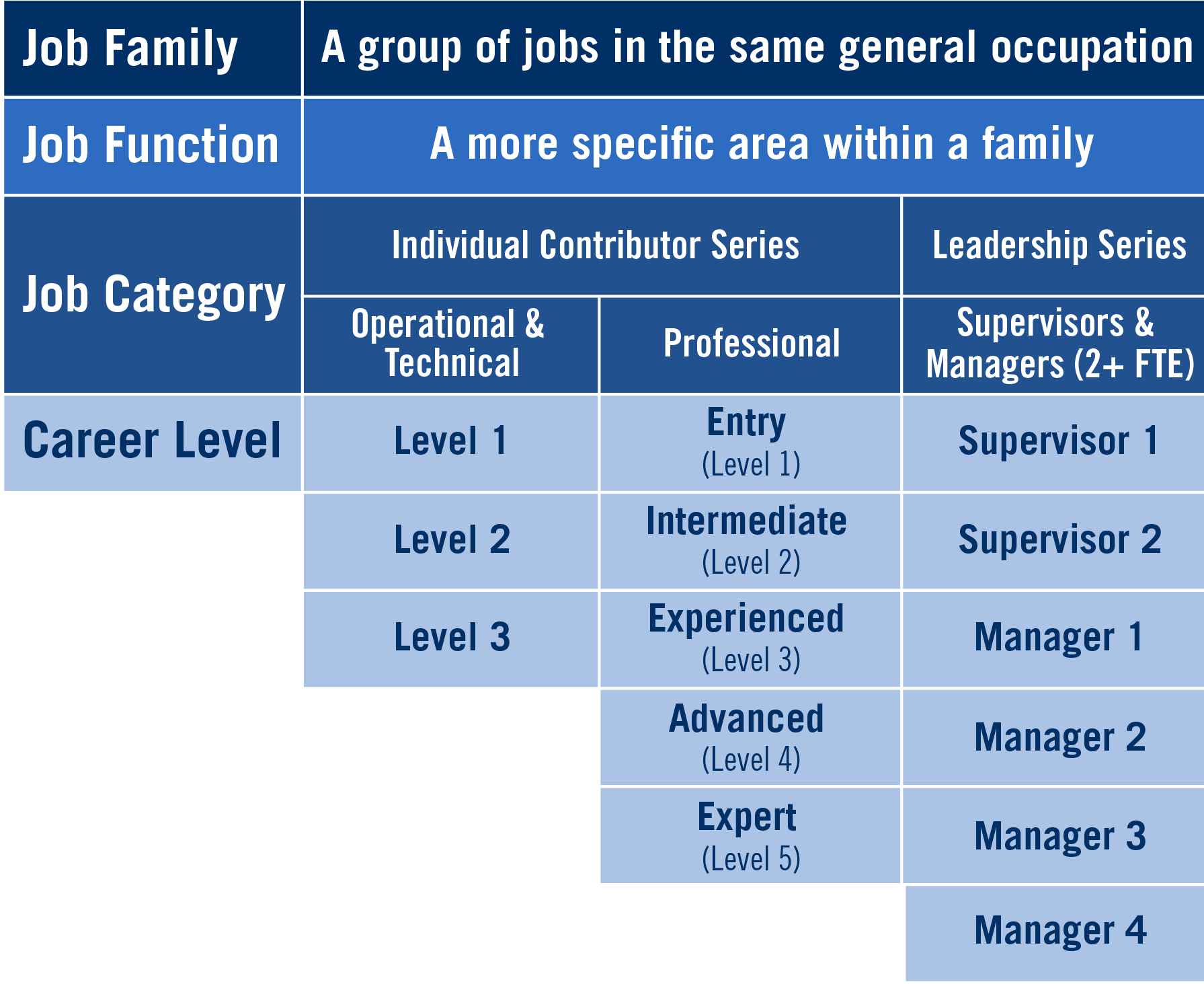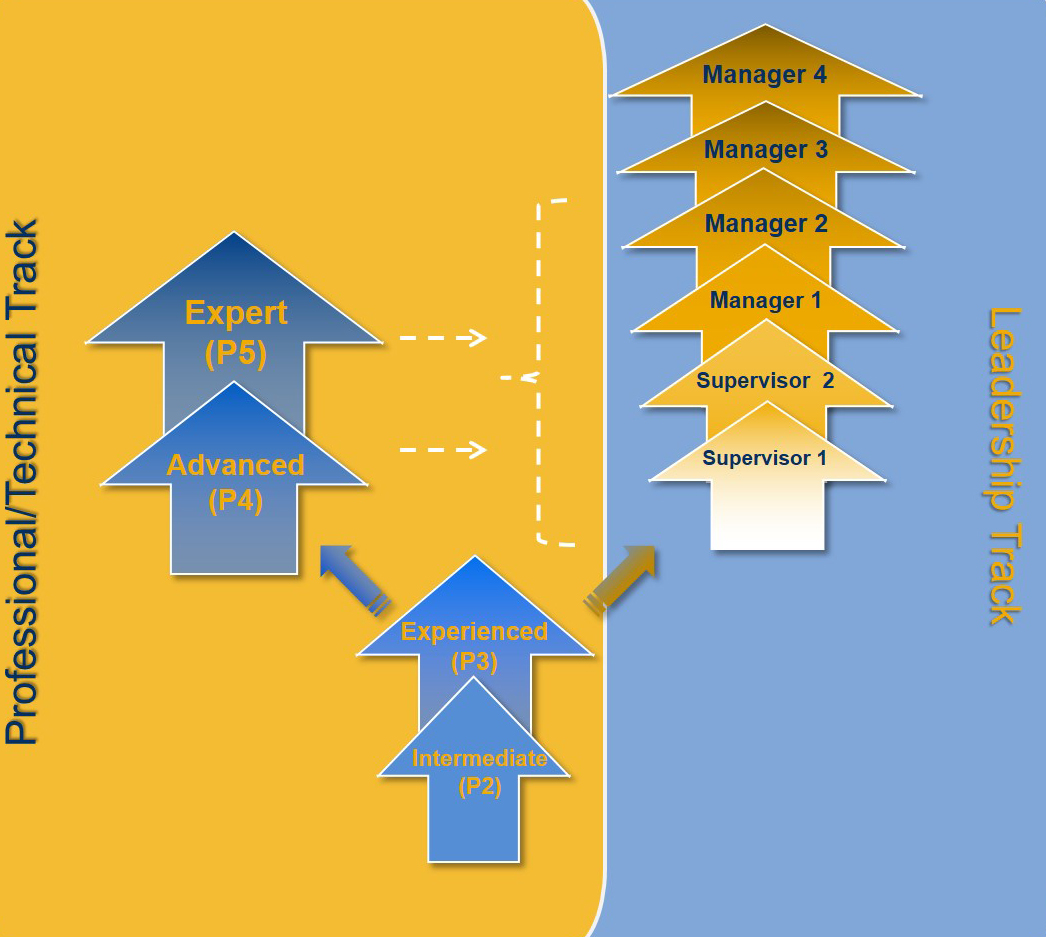Career Tracks
Career Tracks is the job classification structure that aligns jobs at the University to their respective labor market by occupation and supports the development of possible career paths designed to enhance career mobility. Levels for individual contributor, supervisory and management roles within each distinct functional area are defined consistently across occupations and with the labor market for comparable jobs.
Career Tracks organizes jobs into families, functions, categories and levels which corresponds to specific job codes and salary grades. Job categories and career levels are used as needed within each family and function. Each staff member will receive a new job description, or job standard, based on this structure which will be further customized to the position.

